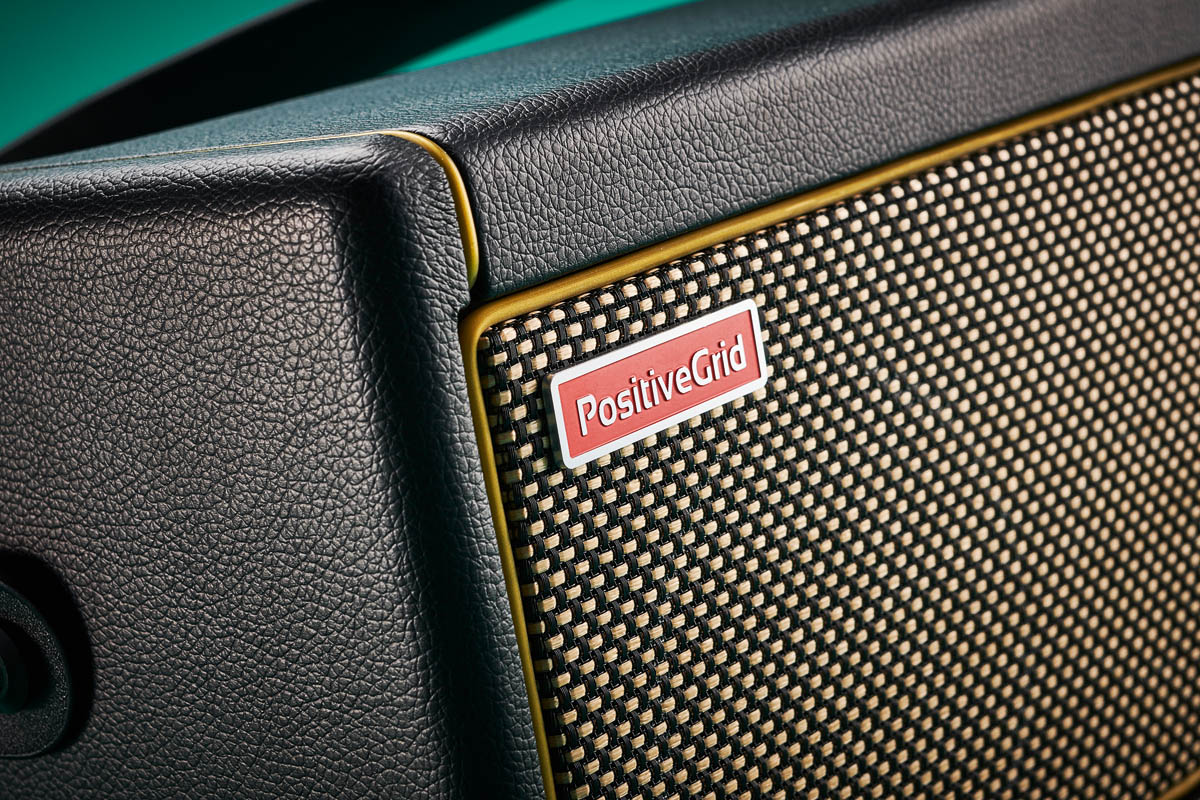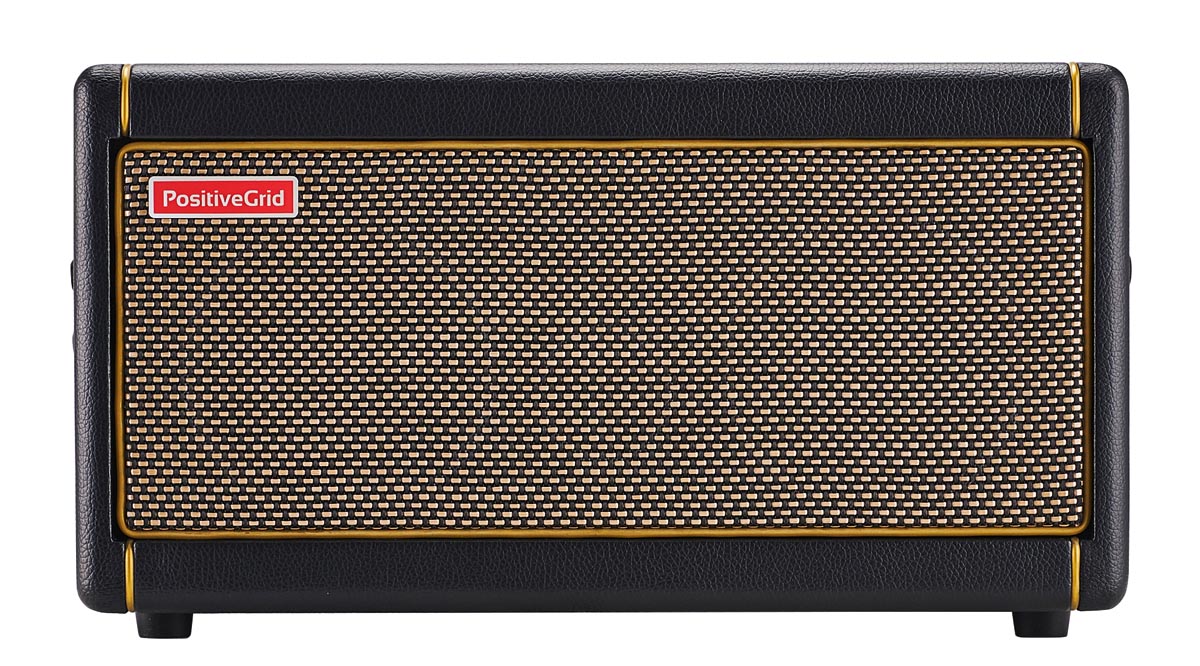Guitar World Verdict
The Spark has all the connectivity, amp modeling and onboard effects you'd expect from a state-of-the-art desktop amp, but it takes the format into the future with its Smart Jam and Auto Chords features. It's incredible.
Pros
- +
Modeling technology keeps the tube amp tones convincing.
- +
It makes a great practice tool.
- +
Excellent value.
- +
Intuitive layout.
- +
Sound is huge, the form compact.
Cons
- -
None.
You can trust Guitar World
Looking for huge savings on guitars amps and more? Take a look at our dedicated Black Friday Positive Grid deals and Black Friday guitar deals pages for all the latest and greatest offers.
In the world of guitar amps, preorder sales of 25,000 is huge. So how did the Positive Grid Spark manage to convince so many people to buy one before having the chance to try it? And what has made over 100,000 players go for the Spark within a year of its release?
Maybe the first part of that answer lies in the tone engine. Anyone who has played through Positive Grid's BIAS modelling software or heads can attest that it is very good. And here, that is really the main event.
- Take a look at the best practice amps
- Keep the noise down with the best headphones for guitar amps
But there is more to it than that. Positive Grid recognises one central truth about guitar players; most of us play at home. And they have kitted out this desktop amp to provide all the features you might want from your stay-at-home amplifier.
What's more, the Spark is not a pricey piece of kit. It is priced well within the beginner's reach.
Then you have to consider the idea that the Spark isn’t just an amp. At least, not in the conventional sense.
Spark can analyse a song of your choice from Spotify, Apple Music or YouTube then transpose its chords so you can play along with it
Of course, you have heard it all before with regards amp integration blah blah, Bluetooth audio streaming yada yada... And sure, the Spark does all that. But the Spark can also analyse a song of your choice from Spotify, Apple Music or YouTube then transpose its chords so you can play along with it.
All the latest guitar news, interviews, lessons, reviews, deals and more, direct to your inbox!
Pick a tempo, play a riff or a chord progression, choose the genre you want and it’ll create a backing track for your to jam with. Even the most cynical tone hound would have to raise an eyebrow at that.

The Spark looks like a proper guitar amplifier. It is a table-friendly format, but it isn’t trying to masquerade as a piece of hi-fi equipment to appeal to the home gadget fanatic. It looks good; all that black and gold, and a piping, grill and control panel that should look reassuring to any player.
The finish is high quality and there is a leather removable carrying strap for porting it about (at 5.2 kg, it is very portable). There are channels to choose from – including bass and acoustic. The controls are familiar enough, with three-band EQ, gain, master and output.
With their own controls, you can quickly dial an organic blend of effects in and out to your taste. Modulation, delay and reverb controls each have their own knobs. This amp is ready to rock-and-roll as soon as you plug in. No need for the app, or a manual.
It is nice to get a taste of what’s on offer without too much searching. The Spark's tone recipe is additive – we were having too much fun playing to go experimenting at first.
This is the little amp that could, and did, offering 40 watts through a stereo speaker setup, and making its respectable wattage count for a lot. Play it at house-friendly volumes or through headphones, but if the mood takes you, this amp can really sound expansive and loud, with modelling tech that offers valve-like dynamics in a digital practice amp format.
When you couple it with the Spark app, all new possibilities are presented. In terms of tone, you have 30 different amps, five compressor pedal models, nine overdrives, 10 modulation pedals, six delays and nine reverbs to play with.
You can design your own signal chain then save those choices into one of seven amp voices across the four preset banks. It might take a while; not because it’s difficult, but it is easy to get carried away with so many tonal possibilities.
This amp can really sound expansive and loud, with modelling tech that offers valve-like dynamics in a digital practice amp format
As well as offering control over your tone, the Spark app offers two key and potentially game-changing features; Smart Jam and Auto Chords. You can stream a range of backing tracks from YouTube inside the app, but Smart Jam uses your smartphone or tablet's mic to generate a backing track based on what you’re playing.

Getting to grips with the BIAS bonanza
With 30 amps included for guitar, bass and acoustic it’s easy to get lost in the Spark’s BIAS engine. Here we have a familiar array of classic Orange, Marshall, Fender and Mesa/Boogie amp types. We found ourselves gravitating to the Plexiglas and JM45 models, especially when we were playing with the Smart Jam feature or improvising. High-gainer players have a lot to enjoy here with the Treadplate and 5153 amp models. The Tone Cloud community is a vibrant resource, too, with users posting their tones for download/uploads via the Spark app. There are well over 10,000 so far, more than enough to keep you inspired.
Smart Jam is great but we see Auto Chords as a much bigger deal. This listens to a song of your choosing within the app, and if it doesn’t already have the chords for it on its database, it will analyse the song and transpose the chords for you to play along.
It is very accurate, only occasionally missing chords, and it only takes minutes. This opens up the Spark as a great learning tool, and it will make learning fun. Does it make you want to play? Yes, a lot.
The hype is real. The Spark is an incredible practice and recording amp, and it is very competitively priced. To be honest, we’d recommend the Spark at this price if that’s all it delivered, but once you factor in those smart features, each encouraging solo players to learn songs and stay inspired, there is no doubt that the Spark is a guaranteed home run.
The Spark is available direct from Positive Grid.
Also try...

Yamaha THR30II – $499 / £399
The original THR was a trailblazer for the ‘third’ amp category, with its desktop-friendly dimensions and great feature set. This MKII improves its modelling tones, offering optional battery power and bluetooth connectivity.

Blackstar ID:Core Beam – $289 / £229
An overlooked gem with dedicated channels for electric, acoustic and bass, as well as bluetooth playback.

Boss Katana Air – $399 / £400
There is so much to recommend the Katana Air. It is fully wireless 30-watt amp with a bluetooth transmitter for your guitar. The Tone Studio app offers 50 effects with COSM modelling and incredible amp voices.
Specs

- PRICE: $299
- TYPE: Digital modelling combo for guitar, bass and acoustic with BIAS Tone Engine and app integration for jamming
- OUTPUT: 40 watts
- SPEAKERS: 2x4” Custom Designed
- TOP CONTROLS: Amp Type, Gain, Bass, Mid, Treble, Master, Mod, Delay, Reverb, Output Volume, Music Volume, four programmable Preset buttons, Tap/Tuner button
- ONBOARD EFFECTS: 30 Amp Models, 40 Effects
- SOCKETS: 1/4” guitar input, 1/8” aux input, 1/8” headphone, Bluetooth audio, USB connectivity for recording 2 In x 2 Out
- DIMENSIONS: 350mm [w] x 180mm [w] x 190mm [d]
- WEIGHT: 5.2 kg / 11.5 lbs
- CONTACT: Positive Grid

Rob has 20 years of experience writing, reviewing, interviewing and editing for guitar magazines and websites, including Guitarist and Total Guitar.
Over the years he's interviewed artists including Metallica, Black Sabbath, Pearl Jam and Soundgarden, but he's lost count of all the guitar gear he's tested.
He's now Reviews Editor for GuitarWorld.com, Guitar World magazine and MusicRadar guitars, heading up our in-house reviews team to give you in-depth and honest tests of the latest guitar gear. He eats and dreams reviews.



